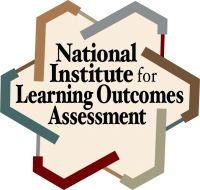Description
The assignment puts students in the context of working for an engineering consulting firm asked by a city council to model the sag of high voltage transmission lines, and consider health implications of electromagnetic fields around the lines. Student teams are allowed to select a municipality. The assignment is part of a course deliberately designed as an integrative experience, tying mathematics and science concepts from other courses with design process thinking, teaming, communications, professionalism, ethics, information literacy, and law. As a result, the assignment targets early development of multiple DQP proficiencies at the bachelor’s degree level, including broad and integrative knowledge, intellectual skills (including information resources, ethical reasoning, quantitative fluency, and communicative fluency), applied and collaborative learning, and civic and global learning.
Background and Context
This assignment was designed to be used halfway through the first semester of a first year engineering course, APSC-100: Engineering Practice I, that focuses on developing general problem solving, critical thinking, and modeling skills in the context of the engineering profession using content knowledge from science and mathematics. The course is structured around two open-ended team-based projects called model eliciting activities (MEAs) which have a particular structure and have been used in mathematics and engineering education (Frank & Kaupp, 2012; Yildirim, Shuman, Besterfield-Sacre, & Yildirim, 2010; Zawojewski, Diefes-Dux, & Bowman, 2008).
The MEA was designed to serve as an integrated context for instruction in complex solving processes, numerical modeling in MATLAB, information literacy, communication, and engineering ethics and law. It provides an opportunity for students to emulate the kind of roles performed by engineers in practice.
Alignment and Scaffolding
This is the first major report of a first year required course. It was designed to be completed over 5 weeks, incorporating both independent work and activities performed in studio sessions. Since it was intended to be the first exposure to open-ended questions in an engineering program, student teams are guided through both complex problem solving and some technical areas through instruction and small progressive closed-ended tasks (e.g. using energy balance equation and the catenary equation used for an idealized cable supported at two ends). These progressive tasks could be eliminated if the assignment is used in the upper years of an engineering or physics program, making the assignment completely student-directed.
The assignment includes a rubric with dimensions targeting the course learning outcomes.
Reflections
This assignment has been a challenging task but very helpful to help students learn how to model systems and tackle complex problems. The assignment has been used for two years, with slight updates over that time.
Over the years of using these open-ended authentic tasks we have noted that a small number of teams are dysfunctional due to lack of prior teaming experience and inequitable work distribution. The assignment includes a peer evaluation survey to flag potential concerns, and a description of the role of each team member as part of the report. These MEAs have been very helpful in several areas:
- Connecting the quantitative analysis element of engineering programs with the qualitative professional skills. Students frequently disconnect these two areas, and ignore their quantitative skills when put into a complex open-ended problem. These tasks require this integration.
- Introducing the need for self-regulation and teaming performance early in the program, and setting the stage for future authentic integrative activities (e.g. service learning design projects, client-driven design projects, etc.)
- Research on these MEAs is showing that they are helping to develop critical thinking, and that students perceive them as valuable for developing skills in critical thinking and problem solving.
Transferability to other settings
This kind of activity is applicable to most first year engineering programs, and would also be appropriate in physics, provided students receive some relevant instruction. Research suggests that authentic problems can be particularly appealing to female and minority students. Significant scaffolding and instruction on teaming may be needed in programs where students come from diverse backgrounds.
Please select an option
The assignment library and the assignments within are licensed under a Creative Commons Attribution 4.0 International License. By clicking “Ok” you agree to cite each assignment (including modifications), with the provided citation on the assignments downloaded from this site.
OK

